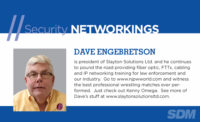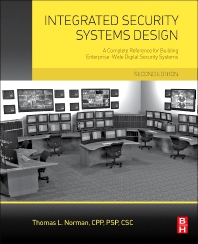Fiber optic communications provide a wealth of advantages for installation company professionals who are trained and equipped to install, terminate and test fiber links. With fiber, long distances are easily conquered, RF and EMI interference is nil and the enormous bandwidth capabilities assure the signal is delivered.
In the past, the cost for security integrators to become fiber-ready was steep, with the necessary tools ranging from $1,500 to $2,000; optical-loss test sets from $500 to $1,000; and training costing more than $1,000 per technician. This has established a barrier to entry for installation firms that want to get fiber ready.
It is my quest to bring economical training, tool sets and testing equipment to our industry so that more dealers can take advantage of the approximately 90 million unused, or dark, fiber optic links that reside in large structures and building campuses across North America.
A proper fiber optic test set includes a light source that outputs at least one of the wavelengths commonly used for fiber optic transmission, and an optical power meter that indicates the strength of the light being transmitted through the fiber under test. In searching for ways to lower the cost, I stumbled onto optical light meters from overseas at an inexpensive price. After testing more than a dozen, I found that these meters perform their tasks quite adequately.
One of the smartest people in the fiber optic industry is Jim Hayes, president of the Fiber Optic Association. After fooling with these new meters for a couple of days, I called Jim and asked how they could be made so inexpensively. Jim’s answer was that it is easy to make light meters, and he should know, being a former fiber tester manufacturer himself.
Now we have functional fiber optic test meters at a reasonable price. To complete the set, we require a light source, which needs to output a stable light stream that can be tested with a connected fiber optic link. In multimode fiber (the most commonly used type within buildings and campuses), the transceivers will usually operate at 850 nanometers. To properly test a fiber link, a technician needs a light source with a steady and consistent 850 nm output. While these light sources are commonly included in an Optical Loss Test Set, they can be expensive. Where will I find a reliable and cost-effective light source?
Enter TRENDnet, which has a fiber optic transceiver line of media adapter products for both multimode and single-mode applications. When connecting to a fiber link, normally two identical transceivers are used — one on each end. TRENDnet 10/100 Ethernet Cat5e/6 two multimode fibers cos less than $60.
I purchased six of the TRENDnet TFC-110MSC transceivers and put them to the test, using a variety of optical loss test meters that I have collected over the years. What I found was, to me, astonishing: the TRENDnet transceivers are not only consistent themselves (each time an individual transceiver is powered up it provides a consistent light power output), but when tested as a group, these components measured within one-half of a dBm across the six units. Again I consulted Jim Hayes, who said that the amount of light power output from transceivers can be difficult to control in the manufacturing process, and any component provider whose fiber transceivers stay within a half dBm from unit to unit is unusual, and indicative of high quality.
For information on inexpensive fiber optic training and technician equipment, visit fiberopticsinstitute.com. Thefoa.org has an extensive free library of fiber optic information.









